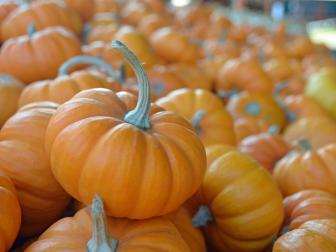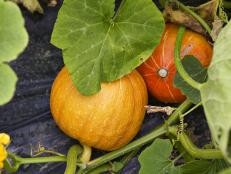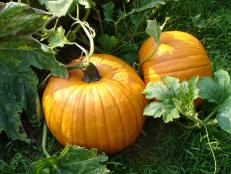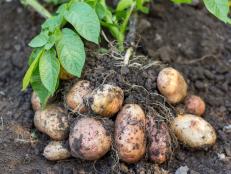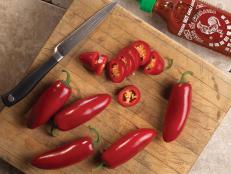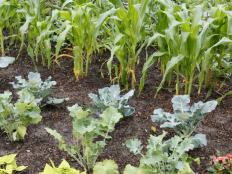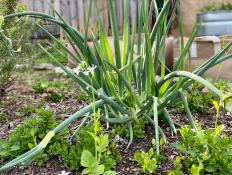When to Harvest Pumpkins
Learn the secrets to harvesting pumpkins so they’ll stage a strong holiday display—and last long enough to fill a pie, too.

Image courtesy of Mick Telkamp
Growing a pumpkin is a fun summer adventure, and as that fruit gets bigger and bigger, you’ll probably wonder how to know when your pumpkin is ripe for picking. Seasonal signals, like shorter days and chilly mornings are common clues that pumpkin harvesting time is near. Or you might spy those first orange fruits at your local farm stand. Here’s how to know when to harvest pumpkins in your own garden.
First of all, understand that as long as there’s no frost in the forecast, your pumpkin is fine and actually better off left on the vine. It will continue to grow as long as the leaves and vine are healthy. If the leaves are under severe insect or disease attack and have all nearly died, then consider harvesting your pumpkin. It won’t grow if there aren’t any leaves to feed it.
If the vine and leaves are healthy, the first clue to knowing it’s pumpkin harvesting time is skin or rind color. A pumpkin that’s ready for harvest should be fully colored—whatever that hue might be. The rind should also be firm. If your fingernail easily pierces or creates an indentation in the skin, the pumpkin isn’t ready to harvest. Pick a pumpkin that’s too soft, and it will shrivel within a few days. Do your fingernail test on the back of a pumpkin—somewhere you won’t see any mark you might create.
Pumpkin-palooza! 10 Pumpkin Varieties 10 Photos
Fall means only one thing: pumpkins, pumpkins and more pumpkins.
Check the vine and stem. Sometimes you’ll notice that the vine has actually started to dry off and pull away from the pumpkin stem, which may shrivel, twist a bit, and become more dry. If you see this on your vine, the pumpkin is fully colored, and you’ve tested the rind with your fingernail, it’s probably pumpkin harvesting time. But you can pick your pumpkin based on rind color and firmness alone, without seeing any of these vine or stem signs.
The exception to fully-colored rule is if a hard frost threatens and your pumpkin is only partially colored. As long as a pumpkin has started to turn its mature color, it will continue to ripen off the vine (but it’s always best to allow pumpkins to ripen naturally on the vine). Frost harms pumpkins and shortens storage life.
Ideally, harvest pumpkins on a dry, sunny day. Wear gloves to protect your hands from the prickly vines. Use hand pruners or a sharp knife to cut the vine on either side of the stem. Give your pumpkin at least a few inches of stem—up to 6 is fantastic. You can trim off excess vine pieces later. Never carry a pumpkin by its stem. If the stem begins to pull away from the pumpkin, the fruit will rapidly start to spoil. The stem acts as a seal, if you will, to keep the pumpkin free from attack by organisms that cause decay.
Pull your vine as soon as you harvest all the pumpkins. If the leaves had any disease, such as powdery mildew, do not add them to your compost pile. Instead, bag them and send them out with your trash or to a municipal composting facility where the compost piles get hot enough to destroy fungus spores.







